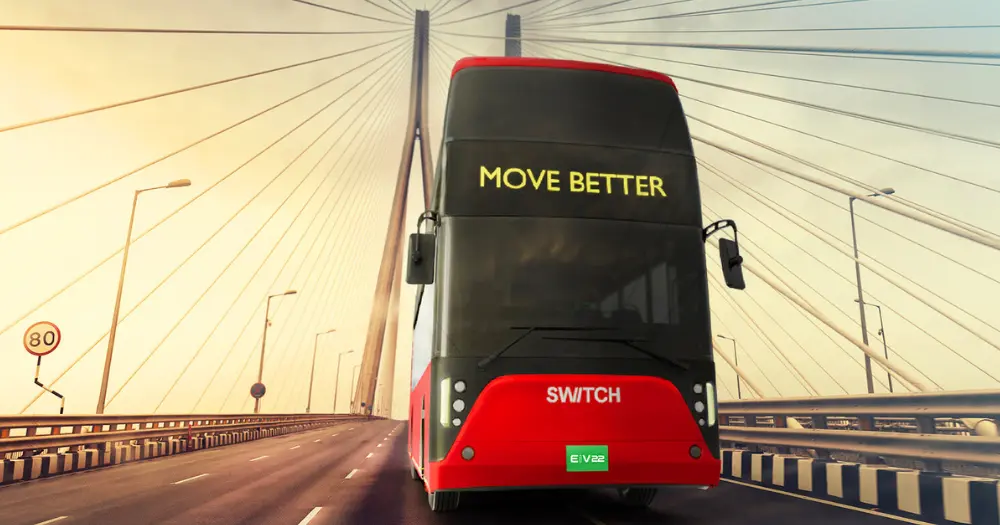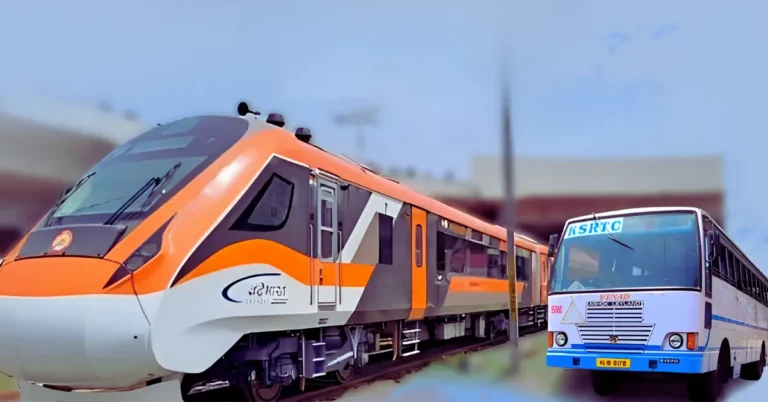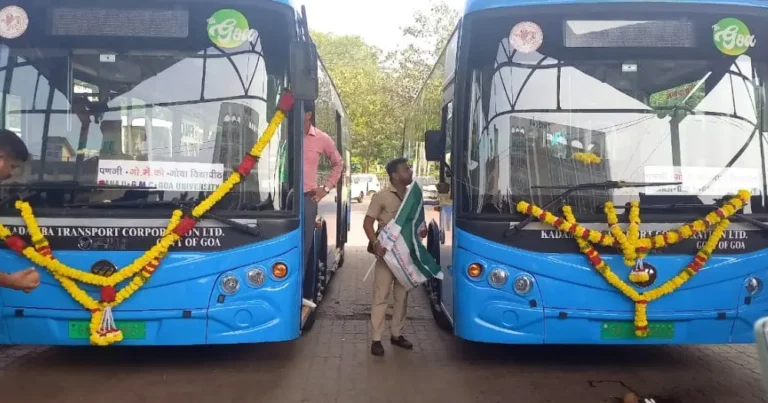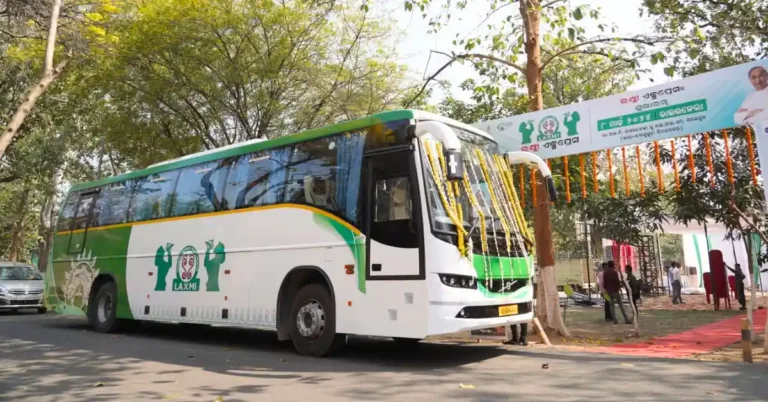Bangalore Double Decker Buses Expected by 2023 End: BMTC Adopts GCC Model
Bangalore double decker buses are expected to hit the roads soon. Also, know when and why they were discontinued earlier.

In a strategic move to manage costs efficiently, the Bengaluru Metropolitan Transport Corporation (BMTC) has shifted its approach towards the procurement of double-decker electric buses.
Initially contemplating a direct purchase of ten Bangalore double decker buses, the BMTC has now opted for the Gross Cost Contract (GCC) model, a more budget-friendly alternative.
BMTC Managing Director, Sathyavathi, emphasized that the GCC model proves to be financially prudent for the cash-strapped bus corporation.
Under this model, BMTC will solely be responsible for providing conductors. The comprehensive operations, maintenance, and drivers will be managed by a private entity, which will be compensated based on a fixed operation cost per kilometer.
Previous attempts to reintroduce double-decker buses in Bengaluru saw tenders being issued to acquire ten double decker buses for Bangalore.
Switch Mobility, the Electric Vehicle arm of Ashok Leyland, emerged as the sole bidder, proposing Rs 10 crore for five buses.
However, the tender was canceled when the Congress government assumed office, citing the high bid price.
While BMTC initially planned to reissue the tender in September, the decision to adopt the GCC model reflects a strategic shift towards a more financially sustainable approach in operating these distinctive double-decker electric buses.
This transition underscores BMTC’s commitment to fiscal responsibility and demonstrates a forward-thinking approach to optimizing public transportation solutions in Bengaluru.
Why GCC Model for Bangalore Double Decker Buses?
The decision to adopt the Gross Cost Contract (GCC) model for operating the Bangalore double decker buses by the BMTC stems from several key considerations:
- Cost Efficiency: The GCC model is deemed more cost-effective compared to direct procurement. By engaging a private party to handle operations, maintenance, and drivers, BMTC can potentially save on various operational expenses.
- Financial Constraints: BMTC faces financial constraints, and a direct purchase of double-decker buses would impose a significant burden on its budget. The GCC model allows BMTC to allocate its resources more efficiently, especially considering its current financial limitations.
- Minimizing Risk: With the GCC model, the private supplier is responsible for the majority of operational aspects, including maintenance and driver management. This helps BMTC reduce its exposure to operational risks, ensuring smoother bus operations.
- Flexibility and Scalability: The GCC model offers a level of flexibility, allowing BMTC to focus on its core responsibilities while entrusting specialized tasks to private parties. It also provides room for scalability in case of future expansion or adjustments in fleet size.
- Kilometer-based Compensation: In the GCC model, the private supplier is compensated based on a fixed operation cost per kilometer. This provides a clear and transparent financial arrangement, aligning incentives for efficient and effective bus operations.
Overall, the adoption of the GCC model aligns with BMTC‘s efforts to optimize operations of the Bangalore double decker buses while prioritizing financial sustainability.
By leveraging the expertise and resources of private partners, BMTC can enhance its bus services without compromising its financial stability.
What is a Gross Cost Contract (GCC) Model?
The Gross Cost Contract (GCC) model is a contractual arrangement commonly used in the transportation and infrastructure sectors.
In the context of public transportation, such as bus services, the GCC model involves outsourcing various operational aspects to a private party or contractor.
Under the GCC model:
- Responsibilities: The public transport authority (in this case, the Bengaluru Metropolitan Transport Corporation, or BMTC) retains certain core responsibilities, such as providing conductors and overseeing the overall service.
- Outsourced Operations: The private contractor is responsible for a range of operations, including providing drivers, maintaining the buses, managing schedules, and ensuring day-to-day operations run smoothly.
- Fixed Cost Basis: The private contractor is compensated based on a fixed operation cost per unit of service, often calculated per kilometer traveled. This fixed cost encompasses all expenses related to operations, maintenance, and management.
- Risk Allocation: The contractor assumes a significant portion of operational risk, including factors like fuel costs, maintenance expenses, and driver management. This shifts some of the financial burden away from the public transport authority.
- Performance Metrics: The contract typically includes performance metrics and service level agreements to ensure that the contractor meets specified standards of service quality and efficiency.
Overall, the GCC model is designed to leverage the expertise and resources of private entities while allowing the public transport authority to focus on its core responsibilities.
It can be a cost-effective way to manage and expand public transportation services, especially when faced with budget constraints or the need for specialized expertise.
Bangalore Double Decker Buses Price
Switch Mobility, the Electric Vehicle arm of Ashok Leyland, who emerged as the sole bidder has quoted a price of Rs 10 crore for five double decker electric buses.
About the Switch EiV 22 Double Decker Electric Bus
The electric double decker bus in Bangalore will be being provided by Switch Mobility, the electric commercial vehicle arm of Ashok Leyland.
The Switch EiV 22 electric double decker bus is powered by a 231-kWh capacity, 2-string, liquid-cooled, higher-density NMC chemistry battery pack with a dual gun charging system.
This advanced technology provides the electric double decker with a range of up to 250 kilometers, making it ideal for intra-city applications.
When were the Double Decker Buses Stopped in Bangalore?
Double-decker buses were phased out in Bangalore after 1997. The exact year may vary slightly depending on the specific circumstances and decisions made by the transport authorities at the time.
However, generally, the discontinuation of double-decker buses in Bangalore started in 1997. This decision was primarily influenced by practicality, operational costs, and infrastructure constraints, as mentioned earlier.
In the 1980s, a pivotal incident occurred when a double-decker bus carrying schoolchildren tilted near Ramakrishna Mission in south Bengaluru. This event marked a turning point.
At that time, BMTC, formerly known as Bangalore Transport Service, initiated a gradual reduction of its double-decker bus fleet. Ultimately, these buses were entirely removed from the roads in 1997.
Why Were the Double Decker Buses Discontinued in Bangalore?
Double-decker buses were discontinued in Bangalore due to various reasons, including:
- Lack of Practicality: Double-decker buses are taller and larger than regular buses, which can make them less practical for navigating through the city’s often congested and narrow roads. Maneuvering such buses in heavy traffic can be challenging.
- Infrastructure Constraints: Many of Bangalore’s roads and routes were not designed to accommodate the height and size of double-decker buses. This can lead to issues such as low-hanging branches, overhead wires, and tight turns that make it difficult for these buses to operate.
- Accessibility Concerns: Double-decker buses may pose challenges for passengers with mobility issues, as accessing the upper deck requires climbing a flight of stairs. This can limit their accessibility and inclusivity.
- Operational Costs: Maintaining and operating double-decker buses can be more expensive than regular buses. They require specialized maintenance facilities, and the cost of running and servicing them may not be justified by the passenger demand.
- Safety Considerations: Safety concerns may arise due to the potential for accidents involving overhanging structures or other vehicles. Ensuring the safety of passengers and pedestrians in a city with significant traffic density is a critical consideration.
- Shift in Focus: The focus of public transportation in Bangalore may have shifted towards other modes, such as metro systems and smaller, more maneuverable buses that can better serve the city’s evolving transportation needs.
While double-decker buses have their unique appeal, especially for sightseeing purposes, in a rapidly growing and densely populated city like Bangalore, they may not always be the most practical or efficient option for daily commuting.
Catch the latest Bus Industry updates, Exclusive Interviews, Bus News, and International Bus News on Coach Builders India. Download the latest issue of the The Bus Insider magazine for more insights.







